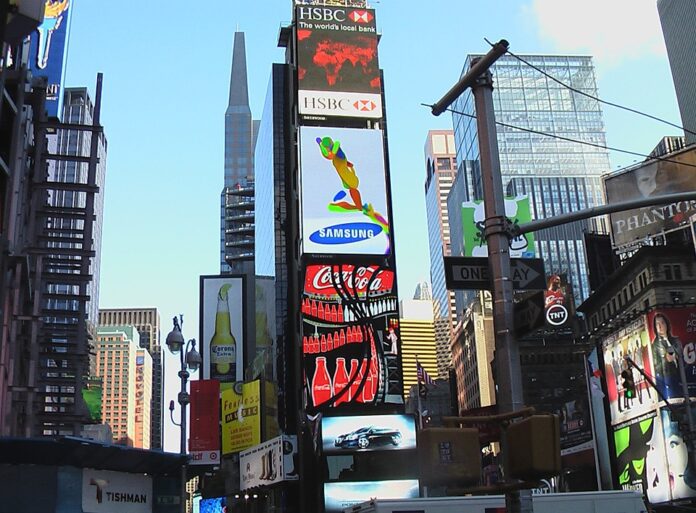
It is highly likely that if you sent someone on an errand to get you some petroleum jelly, you would say you needed ‘Vaseline.’ The brand is such a formidable presence in its sector that it has become a synonym for the real product. Such is the might of a megabrand,
The market share that megabrands hold and their massive global reach make it difficult to imagine them as fledgling startups. Except, that is exactly how most of them began; with an idea and shaky determined hands. The end result has been years of products that make our lives easier every day.
Let’s take a step way back in time and find out how these powerhouses started out:
Nike

In a surprising twist, when Bill Bowerman and Phil Knight began their shoe business in 1964, it had a different name. They had christened it Blue Ribbon Sports. Additionally, they were not making their own shoes at the time. Initially, they sold running shoes from a Japanese firm called the Tiger Shoe Company.
When the two first met, Phil was a student and Bill was the track coach at the University of Oregon. Bill, in an effort to better the performance of his athletes, had taken to modifying their shoes. It was Phil that first sampled them and found that they worked better than the average running shoe.
Seemingly the idea stayed with him and led him to the Tiger Shoe partnership into which he invited Bill Bowerman. After a year selling the Tiger Shoe units, Bill stayed true to form and had a modification idea. They proposed it to the company and they got on board to take it to market. Again, Bill’s modified shoe design proved better and was flying off shelves.
Unfortunately, the partnership hit turbulence with the success and they parted ways. As a result, Nike was born in 1971 with Bill and Phil as equal partners. As of 2019, Nike was worth $116 billion and boasts some of the most prestigious endorsement deals in recent times.
The Body Shop

Most cosmetic products bear a disclaimer stating that neither the product nor its ingredients were tested on animals. You have Anita Roddick to thank for that, she was adamant in advocating against animal cruelty in the cosmetic industry. Her journey began in 1976 at a small shop in Brighton.
Anita Roddick’s debut was indeed a humble one. She had no capital to purchase any fancy labeling or delightful glass perfume bottles in bulk for her products, click here for more info. Instead, she used plastic containers bought from a hospital. In the same frugal vein, she hand-wrote the labeling and sourced raw materials directly from native suppliers.
The efforts paid off as her clientele became larger making her brand attractive enough to franchise. So much so that by the ’80s there were more than 100 outlets of the brand in and outside the United Kingdom. Further, in 1984 the company was publicly listed and continued to grow through franchises across the world.
As of 2006 when L’Orèal bought The Body Shop, the sale price agreed upon by the two was approximately £652 million. A far cry from the £4000 Dame Anita Roddick began it with.
Victoria’s Secret

Are you curious about what the secret is? Well, one fine afternoon Gaye Raymond’s husband went to buy her some lingerie. His experience was anything but pleasant. To be fair, it was the ’70s, shops selling women’s underwear was the last place anyone expected to find a man. However, the Raymonds saw an opportunity to take the shame out of it and modernize lingerie. Behold, Victoria’s Secret.
The market was receptive to the new modern designs and the brand prospered. From the single store they began in 1977, they expanded to five stores and a sizable catalog. Nevertheless, it is rumored that the business was in the red by 1982 when the couple sold it to Les Wexner.
Under Mr.Wexner’s umbrella, the brand has had years of wild success and grown to gain universal recognition. That said, in recent years due to various market factors including stiff competition, it has been stumbling. It is currently valued at slightly more than $1 billion but a deal for it to change hands has been afoot.
Ben & Jerry’s

If ever there was a mom and pop that warmed hearts, Ben & Jerry’s is definitely worth the mention. Besides the ice cream flavors they are known for, their business culture won them many loyal fans. Even though the two co-founders confess to not having any solid business strategy at the start, they defied the odds.
Ben and Jerry were high school friends and began their venture in 1978 at a shop that was previously a gas station. Within 5 years, an intrastate stock issue enabled them to set up a processing plant. They soon grew to 40 shops and retail outlets.
The enviable reception of their blends in the market put them in a market share battle. Häagen-Dazs tried to block dealers from carrying the brand but eventually lost that fight.
After years of their traditional ‘free scoop day’ and quirky flavors, the partners sold their business to Unilever for close to $326 million.
Sony

When you aren’t using a Sony device, chances are you are listening to or watching a production from its media stable. It is unlikely that its founders thought this would be the case when they began the firm shortly after World War II. Masaru Ibuka and Akio Morita are the founding fathers of the Japanese company.
Among the first products from the brand were a tape recorder followed by a transistor radio. As a matter of fact, it is when the transistor radio became very popular in America that the firm went international. Today the company has formidable interests in:
- Video games
- Music production
- Television productions
- Electronics
- Telecommunication
The company’s achievements and its level of diversification are incomparable. It is no wonder that Sony is currently worth around $90 billion.
Conclusion
What’s in a name? If the stories behind these brands are anything to go by, a lot of courage and hard work goes into it.
It appears that none of the founders behind these outstanding enterprises knew what they were getting into. They were simply pouring into the world the ideas that came so naturally to them.
Perhaps, therein lies the secret recipe of success; just start.
















